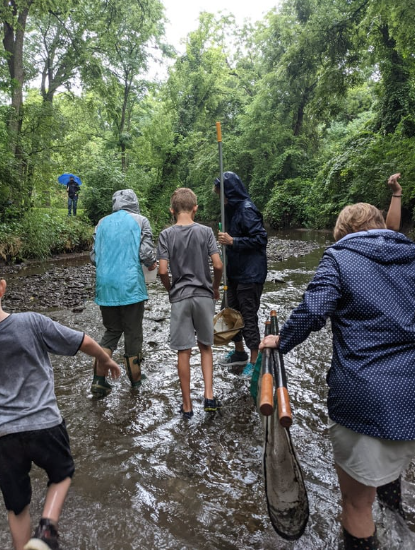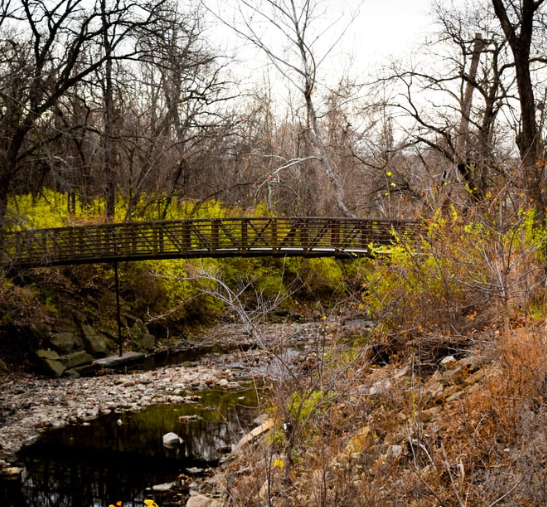Water Quality
Our project mission is to monitor, maintain, and restore natural conditions in Johnson County watersheds, while providing education and outreach to the public. We currently conduct monitoring at multiple locations and work with several partners on stream cleanups and educational programs.
Mill Creek
The EMNs monitor Mill Creek in southern Johnson County following Missouri Stream Team protocols three to four times a year. We sample for water quality chemical indicators using field instruments and test kits and perform macroinvertebrate sampling twice a year. The data are reported to both Johnson County Stormwater Management and the Missouri Stream Team. The Missouri Stream Team compiles data from streams throughout the Missouri River watershed.
Lake Lenexa
The EMNs monitor Coon Creek both upstream (the inflowing stream) and downstream (the outflowing stream) of Lake Lenexa by examining nutrients (nitrate and phosphate concentrations), water turbidity/clarity and dissolved solids. Our comparison of the inflowing and outflowing streams currently provides evidence that the lake/wetland complex is functioning to clean the Coon Creek Watershed. Future data will be used to track the effects of surrounding development on water quality. The data are reported to Johnson County Stormwater Management and the City of Lenexa. The City plans to make the data available to the public on the City website for educational purposes.
Chloride Monitoring
The EMNs are partnering with the Izaac Walton Salt Watch to evaluate the impact of salt on Johnson County streams. Chloride concentrations are measured year-round with test strips to provide an indicator of salt concentrations. The collected data is used to educate the public regarding environmental impacts of salt used for de-icing roads, driveways, and sidewalks.
Stream Maintenance
Working with city, county, and other partners, the water quality project organizes and participates in stream cleanups and habitat restoration, including removal of invasive species, such as Bush Honeysuckle and Garlic Mustard, from stream riparian corridors.
Education
We participate and lead educational programs on water quality for various age groups, including EMNs, Junior EMNs, and the Friends of the Kaw middle school program. We also distribute information and answer questions at various public events.
Clean water: It takes all of us.

What you can do:
- Don't wash your car in the driveway
- Don't use too many chemicals on your lawn
- Get your soil tested to apply correct amounts of fertilizer
- Pick up after your pet
- Dispose of waste properly
- Use less water
- Plant a rain garden
- Use native plants
Return to Extension Master Naturalist home page.
